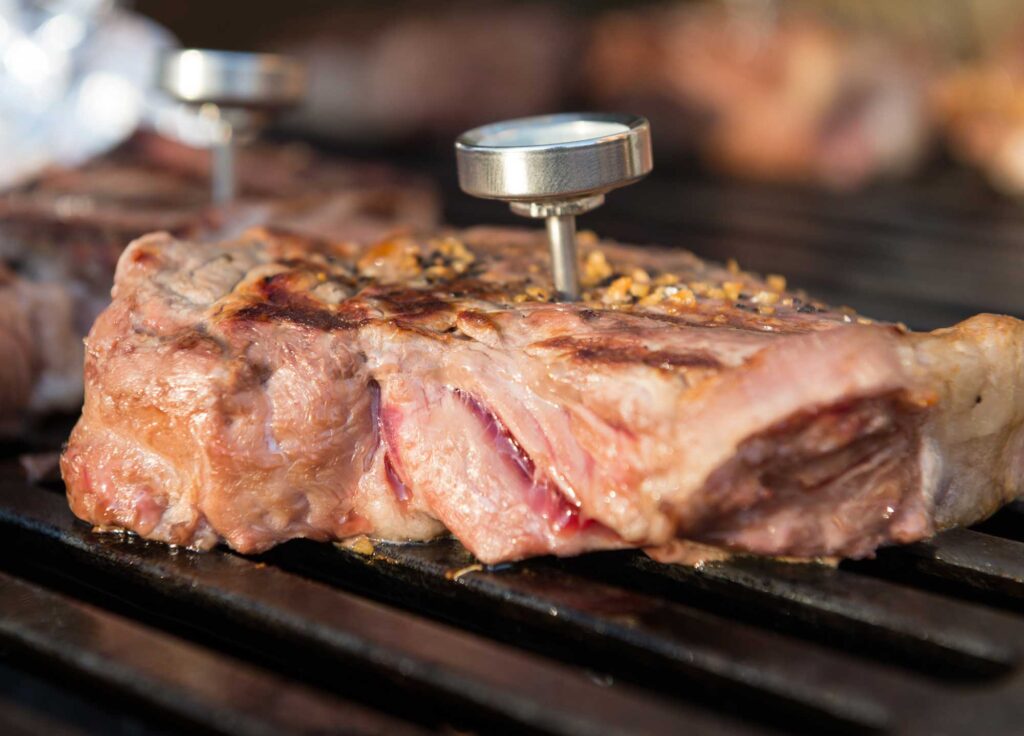If you’re like the average person, you may enjoy spending some time in the kitchen preparing tasty meals for your family. Whether you’re an adventurous eater that’s always diving into new recipes or a kitchen novice who wants to learn the right ways to prepare food, it can be tricky to know where to start.
Whether you’re an experienced chef or just starting out, you’ll likely find that meats and plant-based proteins need to be cooked precisely, not just to bring out their flavor, but also to make sure that they are safe to eat. So how can you know what temperature to cook food to?
Fortunately, there are very clear guidelines for meats and plant-based meats. In this short guide, we’ll walk through the steps to cooking meat to the correct temperature.
The Tools: Buying (and Using) a Meat Thermometer
If you plan to cook meat, it’s a good idea to invest in a meat thermometer, available at your local Stater Bros. Markets for under $15. If you’re a kitchen whiz, you may want to spring for a fancier version, like a digital thermometer. Once you have one, you’ll never go back to poking and prodding your food or attempting to guess at its temperature!
To use a meat thermometer, simply insert the probe into the thickest part of the meat. Avoid touching any bones with the end, as this will make your reading inaccurate.
The best time to check the temperature is toward the end of the cooking time. If you wait until the meat is supposed to be fully done you could end up with dried-out, overcooked food.
What Temperature Does Food Need to Be Cooked to?
Do you have an old refrigerator magnet that lists the appropriate temperature for various cuts of meat? Maybe you rely on an old cookbook or a handwritten index card. If so, it’s time to brush up and review the latest guidelines. The USDA has updated safe cooking temperatures, so it’s a good idea to review them occasionally.
Here are some of the common temperature guidelines for cooking raw meat:
Chicken or Turkey
The current recommendation for cooking cuts of poultry is for the meat to reach 165 degrees. This includes ground chicken and turkey.
Pork
Whole cuts of pork may be cooked to 145 degrees if they are given a three-minute rest period before serving. Previously, the guideline for cooking whole pork was 160 degrees.
This will likely come as good news to those who find overcooked pork to be dry and inedible. However, keep in mind that ground pork should still be cooked to 160 degrees.
Beef
Whole cuts of beef (steaks, roasts and chops) should be cooked to 145 degrees. The same temperatures apply to lamb and veal. It’s also important to include a three-minute rest time after removing the meat from the heat source.
Ground meat in this category should be cooked to 160 degrees.
Plant-Based Meat
Plant-based products like Beyond Meat have become quite popular in recent years. Even meat-eaters enjoy these foods from time to time. What many people don’t realize is that there are temperature guidelines for cooking plant-based proteins as well! This is done as a matter of preserving good taste and food safety.
For plant-based meats, your best bet is to cook foods according to the package instructions. This will increase your chances of serving something that tastes great and has a pleasant texture.
What Temperature Should Pre-Cooked Food Be Reheated to?
Whether you are reheating leftovers or a frozen dinner, precooked foods should be treated with care. Improperly reheated foods can cause food poisoning. Remember that no amount of reheating can make a food-safe once it has spent too much time in the danger zone. When in doubt, throw it out!
If you do reheat food, only do so one time. Heat food to 165 degrees and keep it at that temperature for two minutes. If you microwave your meat, stir or rotate it to ensure that it heats evenly throughout.
Final Thoughts
Cooking meat correctly is a matter of safety and good taste. For full-flavored meats that are sure to be a hit with the whole family, check out Stater Bros. Markets Meat and Seafood departments.

